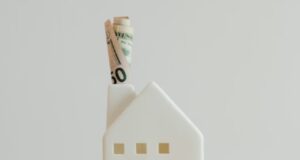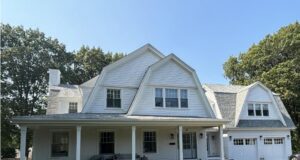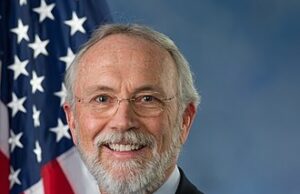Balancing Embodied and Operational Carbon Emissions from New Buildings is Critical for Long-term Decarbonization, According to New ULI Report
WASHINGTON – RealEstateRama – For new construction, owners, developers, and investors can achieve the best low-carbon results by considering both the embodied and operational carbon impacts of their buildings and striking a balance between upfront carbon in materials and long-term efficiency returns, according to a new study by the Urban Land Institute (ULI). The report examines the various tradeoffs presented when these two types of carbon are considered in the design of a building’s façade and envelope.
The built environment is responsible for nearly 40 percent of global carbon emissions. This number is higher in many large cities, especially New York, where the combination of embodied emissions, derived from building materials, and operational emissions, from heating, cooling, and powering buildings over the course of their service lives, make up roughly two-thirds of the city’s emissions.
“There is a compelling business case for considering a development’s carbon emissions over the whole life of the asset, from rising interest from investors and tenants to higher asset values to staying ahead of carbon legislation,” said Marta Schantz, co-executive director of the ULI Randall Lewis Center for Sustainability in Real Estate. “Buildings that have low total carbon over their life cycle will be best positioned to deliver value long-term. Over the last decade, practitioners in the real estate industry have significantly increased their knowledge of how to reduce embodied and operational carbon separately, and it’s time to understand how they interact with each other to create the full picture of whole-life carbon performance.”
The report, The Carbon Sweet Spot: Design Tradeoffs for Embodied and Operational Carbon in New Buildings, was produced by the ULI Randall Lewis Center for Sustainability in Real Estate with support from global architecture firm Kohn Pedersen Fox (KPF). In memory of A. Eugene Kohn, KPF co-founder and ULI Life Trustee, the firm generously contributed $1 million to the ULI Foundation. This donation established the A. Eugene Kohn/KPF Fellowship, an endowed fund dedicated to advancing research in low carbon design and sustainability. The Carbon Sweet Spot is the first publication to be released under this prestigious program.
“One of the central challenges architects and their clients face as they seek to decarbonize the built environment is understanding how to weigh the trade-offs between upfront carbon investment in higher-performing materials and the building’s emissions over the course of its service life,” said Carlos Cerezo Davila, Sustainable Design Director at KPF. “As architects, building owners, and the cities where they work seek to meet ambitious climate commitments, understanding the full picture of a building design’s carbon impact is vitally important. This report marks a major step toward a more comprehensive understanding of lifecycle carbon in buildings and KPF is proud to support it.”
The Carbon Sweet Spot demonstrates with analyses of three real buildings designed by KPF – One Vanderbilt in New York City, One Crown Place in London, and 18 Robinson in Singapore – how, if each were built today, developers and designers could achieve the lowest total life cycle carbon in each by balancing increases and decreases in embodied and operational carbon. Analysis was conducted by research fellows Christopher Meek, Tomás Méndez Echenagucia, and Teresa Moroseos from the University of Washington Integrated Design Lab.
“The building facade has been demonstrated to have a critical impact on the life of a building and its users: from human health, productivity, and comfort to energy and carbon emissions,” said Christopher Meek, lead research fellow on the report. “Developers and designers can consider each of these factors balancing cost, aesthetics, and programmatic needs. Including total lifecycle carbon in the design process provides an important additional data point in order to best meet market drivers for decarbonization.”
To hit the “sweet spot” between reducing one type of carbon over the other, the report recommends that developers work with designers to conduct a whole-building life cycle analysis (WBLCA) that considers several factors, including local climate conditions, the cleanliness of local energy grids, and the regulatory environment around climate and building decarbonization. With these factors in mind, focusing on the balance between operational and embodied carbon reduction will also save costs by limiting spending on both materials and construction up front, and reducing utility and energy bills over the course of the building’s service life.
Based on the learnings from the project profiles in the report, strategies to reduce the total life cycle carbon will vary for every building and can include:
- Strategically plan the window-to-wall ratio in the façade space
- Assess the total carbon impact of triple pane versus double pane windows
- Avoid excessive insulation in walls
- Use larger curtain wall modules, e.g. with window sizes of 10 ft (3 meters) instead of 5 ft (1.5 meters) to reduce the amount of aluminum framing needed
- Minimize embodied carbon of window shading by using low-carbon materials
The full Carbon Sweet Spot report can be found on ULI’s Knowledge Finder platform.
If you would like to support further research endeavors like this, please consider donating to the A. Eugene Kohn/KPF Fellowship fund here.
For more information, contact ">.
###
About the Urban Land Institute
- The Urban Land Institute is a nonprofit education and research institute supported by its members. Its mission is to shape the future of the built environment for transformative impact in communities worldwide. Established in 1936, the institute has more than 48,000 members worldwide representing all aspects of land use and development disciplines. For more information on ULI, please visit uli.org or follow us on X, Facebook, LinkedIn, and Instagram.
- The ULI Foundation is the philanthropic arm of ULI, focused on securing resources to enable ULI to accomplish its mission and grow the philanthropic spirit of its members.
- The ULI Randall Lewis Center for Sustainability in Real Estate was named by ULI member leader Randall Lewis. The Center is dedicated to creating healthy and resilient communities worldwide. The center’s main programs are Decarbonization, Urban Resilience, and Healthy Places. Discover transformative practices for real estate and land use at uli.org/sustainability. Connect with the Lewis Center at ">
.
About Kohn Pedersen Fox (KPF)
Kohn Pedersen Fox (KPF) is dedicated to elevating the building blocks of the city through innovative architecture, collaborating closely with the world’s most forward-thinking clients to create high performing, carefully crafted buildings that are unique to their physical, social, and environmental contexts.
The firm’s extensive portfolio spans more than 40 countries and includes a wide range of projects from commercial and residential buildings to civic and cultural spaces to education, research, and healthcare facilities. Driven by individual design solutions, rather than a predetermined style, KPF endeavors to design lasting buildings that mitigate their environmental impact and enhance the well-being of the communities they serve.
About University of Washington’s Integrated Design Lab
The University of Washington’s Center for Integrated Design (UW CID) is a Research Center operated by the Department of Architecture in the College of Built Environments at the University of Washington. Its research organization, the Integrated Design Lab (IDL), is a self-sustaining lab that includes interdisciplinary faculty, staff, students, professional collaborators, and partner organizations. Our mission is to discover solutions that overcome the most difficult building performance barriers and to meet the building industry’s goals of moving toward radically higher performing buildings and healthy urban environments. We advance our mission through interconnected research, technical assistance, and education and outreach













